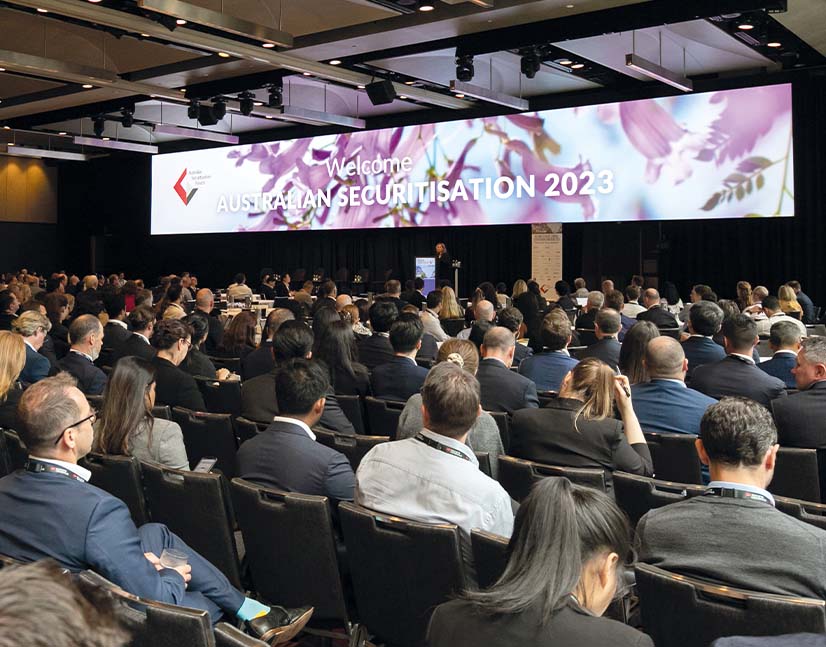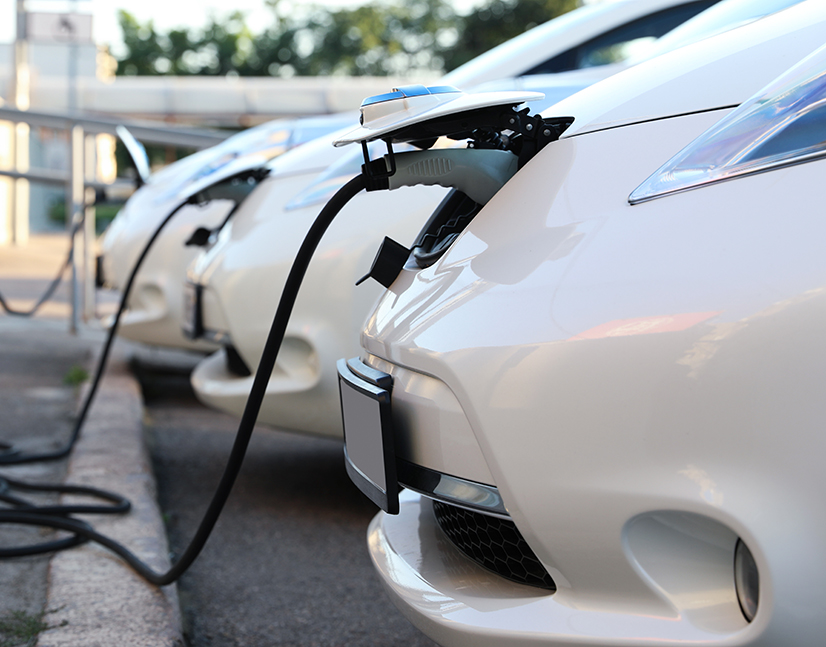
Charging up the Australian EV market
Australia is playing catch-up in electric-vehicle adoption. Policy will be a key driver, but the private sector – including auto lenders – will also play a part. Clean Energy Finance Corporation and KangaNews hosted a roundtable in August, at which market participants shared their insights into uptake, outlook and funding implications.
EV UPTAKE
Davison How significant a sector is transportation in Australia’s emissions-reduction path and what is the status of electric-vehicle (EV) uptake?
TAM In 2020, the transport sector made up approximately 18 per cent of Australia’s greenhouse-gas emissions, third behind the electricity and stationary-energy sectors. Passenger vehicles are a subset of the transport sector and make up around 8 per cent of Australia’s emissions.
What is unique about passenger vehicles is that the technology for decarbonisation is already available and commercially proven. However, the uptake is slow despite their availability. We need people to start thinking about EVs when considering their next car purchase, and this is a goal of the CEFC [Clean Energy Finance Corporation].
According to Bloomberg New Energy Finance, sales of passenger EVs reached approximately 7,000 cars in Australia last year, or just 0.8 per cent of total passenger vehicles sold. Even this was an increase, from 0.1 per cent in 2019.
There are a few unique challenges regarding EV uptake in Australia, including the limited number of models available. Around 30 EV models are available in Australia, compared with 300 overseas.
There is also public concern about charging, even with technological improvements. Range is improving: EVs such as the latest Teslas and the new Hyundai Konas drive between 450-620 kilometres per charge, which is nearly a return trip from Sydney to Canberra. Public perception has not caught up, but this is being addressed. Meanwhile, governments are beginning to roll out charging-infrastructure projects to help overcome range anxiety.
Another issue is the upfront price of EVs, which is relatively high compared with the ICE [internal combustion engine] vehicle equivalent. This is a barrier. However, the total cost of ownership – considering EVs are cheaper to run and have lower maintenance costs – ends up being lower over the life of an EV.
Also according to Bloomberg New Energy Finance, EVs are expected to reach price parity with ICE vehicles in the high-end segment within the next five years. They are predicted to be economically competitive in all segments of Australia this decade. The EV share of new passenger vehicles is predicted to grow to 66 per cent in 2040 from a forecast 6.6 per cent in 2025.
Davison Presumably this relatively slow pace of public uptake means EV loan books are also small at present?
DI GORI That’s right – EVs currently make up a very small part of our fleet portfolio. But I think we can look to New Zealand for some future guidance. It is a much more mature market than Australia, which means we are quite bullish on the sector and we are supporting our customers through dialogue on zero emissions.
We take this very seriously because we see a requirement for fleet users to transition to zero emissions. We are developing a holistic solution to guide our customers through this journey.
Our group was recently awarded climate-active status, meaning we are already at net-zero emissions. This is helping us in the dialogue with our customers about what they might target in this space, and the financing for the relevant vehicles going forward.
Cost is prohibitive, as well as the availability of vehicles that are fit for purpose. Of the 32 vehicles that are practically available in Australia today, when we consider what is fit for purpose in the fleet space we can probably narrow the number down to fewer than 10 models and makes for customers to choose from.
Even where it is quite easy to find a suitable vehicle – in the metro space, for instance – there is cost to consider. For example, customers using pooled vehicles – the equivalent of say, a Toyota Corolla or another make that is suitable around the metro suburbs – might find the EV equivalent has two-and-a-half times the upfront price.
Whole-of-life cost is an important part of the dialogue we have with our customers – in the fleet space we are financing over the life of the vehicle.
Recent policy initiatives have influenced this dialogue, particularly in New South Wales, whether this means rebates or stamp-duty waivers.
This type of policy response will prompt a material shift in the availability of EVs, because it is only when OEMs [original equipment manufacturers], particularly global OEMs, see there is a holistic government response that they will start sending vehicles to Australia.
We are already seeing this in New Zealand, where there is a robust government approach to charging infrastructure to alleviate the issue of range anxiety as well as rebates now in place.
OEMs are responding to this support and there is talk about new makes and models being delivered into the New Zealand market.
AUSTIN We have been running our auto programme for just five years but we have made some interesting observations. First of all, we have seen the bar for what we categorise as green slowly raise over time.
To begin with, our green classifications included some ICE cars, specifically petrol cars that had low tailpipe emissions. We have gradually raised the bar to the point where only EVs and hybrids qualify.
The interesting thing is that green car loans have remained at about 10 per cent of what we write even as we have completely removed ICE vehicles. This tells us the market is changing and evolving, and consumers are moving to greener vehicles all the time.
However, while 10 per cent of our origination is green the majority are plug-in hybrids while EVs are still around 1 per cent. There are a couple of reasons for this. The reality is that only 0.8 per cent of total auto sales are EV vehicles, so in this context 1 per cent of our book is probably fair enough.
Also, while we have a price signal to customers that it is far cheaper to have a green vehicle, some of our competitors have even cheaper rates. This tells me the motivation for lenders to have an ESG [environmental, social and governance] programme is really driving price now. The cost of EVs is rapidly coming down and becoming available to a mass market, and the financing is also getting cheaper.
This type of lending still goes to our overall objective, which is to position ourselves for the future and to develop our green funding programmes. From engagement with European investors, we have seen just how important a developed ESG programme is and we want to position ourselves at the front of the pack.
We are noticing now that there are a lot of questions about our ESG policy and credentials even when we are marketing non-ESG deals. I think it is starting to translate into price, too.
Policy environment
Government policy and incentives have supported adoption of electric vehicles (EVs) in countries where the transition from internal combustion is more progressed. Australia has lagged, though some positive signs are emerging.
HELLERUD In Australia, the missing piece of the puzzle is government policy and regulation. There is certainly demand from Australian consumers but ultimately it comes down to supply. Australia has the highest per-capita uptake of rooftop solar in the world but the lowest rate of EV ownership among developed countries.
The EU and the Nordic countries have mandatory carbon targets for car makers that are enforced with hefty fines. OEMs [original equipment manufacturers] can gain carbon credits and offset emissions associated with internal-combustion engine vehicles by selling EVs. It is a carrot-and-stick approach within the regulatory framework, supplemented by consumer incentives that assist with affordability.
The virtual absence of this type of regulatory framework and policy incentives in Australia means OEMs are not incentivised to supply in Australia. I think this is the biggest problem we face.
Davison In the fleet space, is the outlook a binary switch at the point at which it becomes economic to do fleet replacement in EV format? Or is it a more incremental shift, as appears to be emerging in the retail market?
DI GORI I believe once we get to price parity with whole-of-life cost, the decision will become much more straightforward for a lot of customers.
The fleet space is much more complicated than the consumer space. For instance, the considerations related to rental vehicles are very different, including inputs on how the vehicle is maintained, the residual value of vehicles and other costs that need to be factored in. Getting a whole-of-life cost comparison is a jigsaw puzzle.
Although price is important, however, it usually comes last in our discussions with institutional corporate customers. ESG is also important to them.
We are an adviser in these discussions. We begin by talking about what types of vehicles they need in their fleet, the emissions they can expect, why this is important and what else they should consider. We are well placed in these discussions because ESG is also important to us, so we can guide customers on their journey to the electrification of their fleets.
FUNDING CONSIDERATIONS
Davison If lenders are giving a price signal to the borrower, there must be an impact on the bottom line. Is the reason for being in this space that investors want to see EVs in securitisation deal pools, or at least that asset books are not ‘brown’ relative to peers?
AUSTIN I think it is the latter. Having green assets is not about price or the immediate margin we get on a transaction. It is about investors’ and banks’ desire to have green assets. This is now overwhelming, to the point where we receive quite a lot of pressure from investors to get a share of whatever green assets are available.
MILIS I have been talking to investors around the globe and I think it is interesting to contrast the journey the rest of the world is on in the adoption of EVs.
By the start of next year, my Barclays partners are telling me European investors will all need to disclose their investments in line with the changes to the EU taxonomy.
Meanwhile, Japanese companies have more or less forced their prime minister to increase the national emissions-reduction target to 50 per cent by 2030. The previous reduction target was only 26 per cent. The move shows that, while in Europe it is governments pushing the agenda, in Japan there is pressure from across industry, companies and the private sector in general.
In talks with New Zealand investors, the feedback has been “who still buys petrol engine vehicles?”. It seems EVs are part of life in New Zealand now and they cannot believe the position Australia is in.
Obviously a lack of government incentives and tax breaks – of the type I understand are happening in New Zealand – is an issue. But it certainly seems the offshore investor community is well ahead on this journey.
HELLERUD ESG is very high on the agenda for all market participants. Investors are increasingly making public comments and commitments on sustainability, and companies are doing likewise by establishing ESG policies and governance.
Banks and intermediaries are just as focused on the ESG agenda. Royal Bank of Canada, for example, has publicly committed to a range of sustainability commitments, including a goal of providing C$500 billion (US$393.9 billion) of sustainable finance by 2025.
On EVs, OEMs are very vocal about their commitments to full adoption and when it will occur.
Davison Is the capital market ready for EV asset-backed securities (ABS) issuance – in volume of assets and demand?
HELLERUD We are seeing EV loans and leases pooled with other auto loans and leases in our warehouse facilities, in Australia and elsewhere. The proportion of EV loans and leases is still very small – here and offshore – but this is really a function of our clients’ sales volumes. As EV sales continue to increase, collateral in warehouse facilities will follow the trend.
Regarding securitisation activity, Toyota Finance has been the most active in the green ABS space. We tend to pitch ESG in a couple of formats as it relates to ABS, including where the underlying collateral satisfies investors’ ESG criteria or the proceeds from securitisation are segregated and used to originate loans and leases for qualifying vehicles.
This has been the format of the Toyota programme. It established its green-bond programme in 2014 and was the first to issue a green ABS. Interestingly, one of Toyota’s earlier transactions only has approximately 3 per cent eligible contracts at closing. But the issuer segregated proceeds from the transaction to finance future hybrid and EV origination.
Toyota most recently issued in July 2021. Its deal format was the same, with the proceeds applied to acquire new retail loans and leases to finance Toyota passenger vehicles from model year 2020 or later that meet specific eligibility criteria. This means being a hybrid, fuel-cell or battery EV. There are also restrictions on tailpipe and carbon-dioxide emissions.
There has not been any green ABS issuance in Europe. Daimler and Volkswagen have issued green unsecured bonds, and I anticipate they are probably not far away from green ABS. This is how we are seeing EVs being funded offshore.
MILIS There is a huge pool of money that would be happy to be put into green autos – I must admit, I didn’t realise how much. European investors know they have to get to zero emissions quickly. Japan is looking to invest in zero-emission solutions.
At the same time, as noted there have hardly been any green ABS deals. There have been some corporate green deals done by European auto manufacturers and maybe Toyota as well, but there is still a supply restraint. There is not enough financing of EVs to generate volume for pure EV ABS deals.
The big question with green tranches is always whether investors will be willing to accept a tighter margin than a vanilla or brown tranche. A year ago, I would have said it is just about bringing in new investors. However, I think this is shifting with the move toward zero emissions – there is a potential cost benefit.
This is where reporting becomes really important. If there is a way to track the impact of funding, I think there will certainly be a pricing benefit. For the first time ever, I am not hearing investors hesitate about it. Previously, they have always grappled with providing superior returns for clients they are managing money for while also being active in the ideals-driven ESG world.
HELLERUD The concept of a greenium is a really interesting discussion point. In fact I think the trend that will emerge is a ‘brownium’ investors will apply to non-green issuance.
We are certainly starting to see differential pricing for unsecured bonds offshore. There is more supply and investors have much clearer, dedicated mandates for ESG bonds. The greenium is around 3-5 basis points for investment-grade and high-yield bonds.
It is harder to determine in ABS because the issuance volume is not there. Mismatches in the timing of pricing and slight nuances to do with collateral and sponsors make it difficult to determine.
The deal Toyota printed in July priced flat to swap at all tranches, while a comparable non-green trade came to market the following week at 1-5 basis points above swap across all its tranches. Whether this type of week-to-week movement is market-driven or truly a greenium is difficult to say for sure at this point, though.
EV market evolution
Uptake of electric vehicles (EVs) is not a flat trajectory. The pace of development should accelerate as the range of options available increases and market participants further bed in the idiosyncrasies of the asset class – though this may not be imminent.
DI GORI There is additional complexity in the fleet space. This comes from the residual-value risk inherent to our operating-lease transactions. A different dynamic is at play for EVs given the additional risks in this asset class versus ICE [internal combustion engine] vehicles.
For us, it is always going to be a discussion with investors about credit appetite for the additional risks that may be inherent in EV residual-value settings.
Davison What is CEFC doing to facilitate EV uptake?
TAM We aim to think a few steps ahead of what is happening today. In 2015, CEFC started financing low-emission vehicles at a time when there were not a lot of EVs on offer. We set up our own criteria to define a green vehicle. We also wanted to collect data on uptake of these vehicles, who is buying them and if there are any credit issues.
To incentivise customers to think about lower-emission vehicles, and equally to incentivise lenders to have these conversations with customers, we issued a discounted financing programme where our discount is passed onto the end customer. With lending facilities with the likes of Eclipx and Firstmac, we wanted to start making buyers aware of the lower-emission vehicles available and to educate customers and dealers.
Now there are more EVs in Australia, we are again looking a few steps ahead. Our new focus is EV uptake and how we can enable charging. Through our Innovation Fund we are working with JET Charge on its smart-charging technology.
The cheapest charging option is a cable plugged into a power point. But this isn’t the most efficient method and it may create issues for the electricity grid.
To combat this, we are thinking about different charging methods such as smart charging – so we can prepare for a future where there will be a million EVs in Australia. To this end, we are going to start wrapping EV financing with a charging solution.
DI GORI We have had a funding programme in place with CEFC since 2015, originally for lower-emitting vehicles. This has changed over time to a focus on EVs. The support provided has helped stimulate discussion. It is a journey and, although a discounted rate is not necessarily a huge driver of discussion in the fleet space, it is another tick to help the process.
“The big question with green tranches is always whether investors will be willing to accept a tighter margin than a vanilla or brown tranche. A year ago, I would have said it is just about bringing in new investors. However, I think this is shifting with the move toward zero emissions – there is a potential cost benefit.”
EV DATA AND GROWTH
Davison How are issuers thinking about the additional data they need to provide for green-labelled ABS?
AUSTIN As a securitisation shop, data is in our DNA. We have rich data on the auto side and on new home construction, and we will include a rich data set with any green assets we issue.
Investors wanted to know the emission difference between a standard RMBS [residential mortgage-backed securities] transaction and the green transaction we did. This is hard because in this space we cannot measure what we had previously – or what a standard RMBS is – so reporting emissions reduction is difficult.
DI GORI We have had the ability to report on the CO2 emissions of our vehicles for several years. We have taken a lot of data from global providers and we have data points on the makes and models in our system to measure residual-value risk and the like. We are able to provide investors with a rich data set.
I haven’t actually seen any reporting of emissions here in Australia. The closest I have seen was Volkswagen reporting on the status of vehicles affected by the diesel-emissions scandal – there was specific third-party reporting in this case. At the same time, I can see this changing. It is certainly not outside the realm of possibility and it should involve a very simple table.
AUSTIN We have collected data only because we have the green component, but we have collected it for every car and it could be an interesting thing to report. I was only thinking about green cars but we could report it for all cars.
DI GORI I think we are both going to be well positioned to deliver this type of reporting compared with a consumer auto ABS lender that traditionally would not be capturing a lot of information about the underlying vehicle. Due to the funding programmes we have in place with CEFC, I think we are well positioned to provide the level of disclosure the market is going to demand over the coming years.
MILIS From an investor perspective, understanding that only a very small portion of the auto market is zero emissions means even being able to report on low-emission vehicles is powerful.
When investors do due diligence on a deal, having some sort of measurement point on the transaction and an ability to compare it with future deals is important. I think this will become another field on the table with weighted-average life and the like.
Davison Even with incremental growth, it seems issuers will have a limited stock of green auto assets to supply a lot of demand. Will they be able to sequester assets for green tranches or will the same assets have to remain in comingled ABS pools to avoid any suggestion that nongreen issuance is effectively ‘brown’?
AUSTIN It is a fascinating consideration and one we are going through right now. I should note that we plan to issue our inaugural auto ABS next year and for this to include a green tranche.
The ability to produce ‘dark-green’ assets is obviously finite and the demand for these assets is so strong that we can consider a couple of ways of approaching the market.
One is simply to put these assets up for auction and get the tightest price, which might be 5 basis points inside normal pricing. The other option is to trade access to these assets for wider relationship benefits. This is probably the way we are leaning. We suspect this would offer far greater benefit to our group as a whole.
DI GORI In the medium term, I think we will look to bundle our EV assets with our overall portfolio because this is a scalable approach. Whether we have large enough portfolios specifically to include green tranches is something we will have to consider based on demand over the coming years.

nonbank Yearbook 2023
KangaNews's eighth annual guide to the business and funding trends in Australia's nonbank financial-institution sector.

WOMEN IN CAPITAL MARKETS Yearbook 2023
KangaNews's annual yearbook amplifying female voices in the Australian capital market.
















